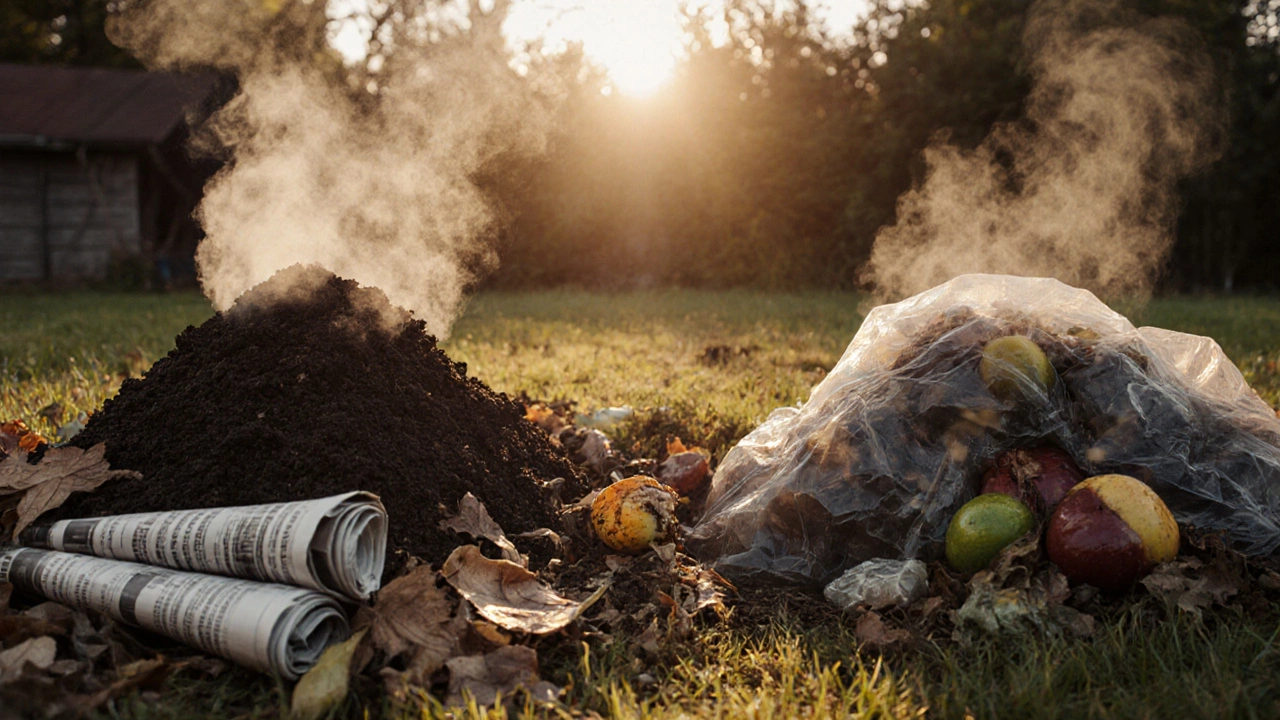Discover how to make the best homemade compost with simple recipes, step‑by‑step guides, and troubleshooting tips for faster, odor‑free results.
Composting Recipes: Simple Ways to Turn Waste into Garden Gold
When you start composting recipes, practical methods to transform organic waste into nutrient-rich soil. Also known as home composting, it’s not magic—it’s just science you can do in your backyard, balcony, or even a small bin on your terrace. You don’t need fancy gear or a huge yard. All you need is a mix of things you already throw away—coffee grounds, eggshells, dry leaves, grass clippings—and a little patience.
Good compost ingredients, the basic materials needed to build healthy compost. Also known as brown and green material, it’s the foundation of every successful pile. Browns—like dried leaves, cardboard, or straw—give structure and carbon. Greens—like vegetable scraps, tea bags, or fresh grass—add nitrogen and moisture. Get the balance wrong, and your compost smells bad or doesn’t break down. Get it right, and you’ll have dark, crumbly soil in weeks. Most people fail because they add too many greens and forget the browns. A simple rule: aim for about 3 parts browns to 1 part greens. No need to measure. Just layer them like a sandwich.
Some of the best organic garden amendment, natural materials added to soil to improve its health and fertility. Also known as home compost, it’s what turns your waste into something your plants actually love. comes from simple recipes you can start today. Try layering kitchen scraps with shredded newspaper in a bin. Or pile up grass clippings with dry leaves and turn it once a week. Even in small spaces, like a balcony in Mumbai or a terrace in Delhi, you can make compost using a sealed container with holes for airflow. The key? Keep it moist, like a wrung-out sponge. Not wet. Not dry. Just right.
You’ll find plenty of tricks in the posts below—how to fix smelly piles, what to avoid (yes, meat and dairy don’t belong here), and how to know when your compost is ready. Some gardeners swear by adding worms. Others use a simple tumbler. Some compost in winter. Others swear by adding banana peels for extra potassium. There’s no single right way, but there are plenty of ways that work. And every one of them turns trash into treasure.
What you’ll see in the collection below aren’t just ideas—they’re real methods used by Indian gardeners who grow food in tiny spaces, deal with monsoon humidity, and still end up with rich soil. No fluff. No theory. Just what actually gets results in your garden, whether you’re growing tomatoes on a balcony or vegetables in a backyard plot.
